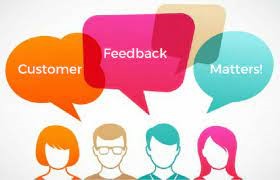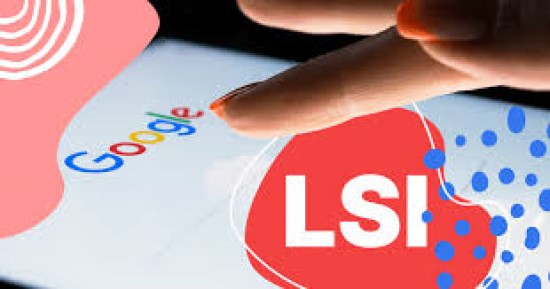The future of your business may be sitting in your inbox today. The people who are affected most by your product or service, are the ones who should best inform you of its performance. Clients provide priceless information in what we classify as feedback, and using these can transition your company to unprecedented growth.
Collecting customer feedback is a common practice in many established firms that have discovered the power of user evaluation. It is a great way to tell your clients that their opinion matters to you. Effectively demonstrating that you want them involved in the evolution of your business.
What is Feedback?
These are opportune reviews from people who use your product or service. When customers are impressed in a distinct way about a commodity, they express these sentiments via available outlets. These expressions may be positive or negative but represent the collective impact of your commodity with its audience.
Many vehicles and formats cater to client opinions about products or services. Some are rewarded by agencies, others are taken by support organizations, and the rest are done by consumer advocates – these are mostly negative.
Why Should You Collect Feedback?
Getting your clients to talk with you is like having the gold jumping out of the ground into your pocket. The more gold you find the richer you get. Here are a few reasons to make sure that consumer responses are being used.
- You can harness important insights about your clientele
- Effectively measure product or service appreciation levels
- Discover how your customer service is doing and where you can improve on its skills
- Identify clues that can reveal trends and fads that may help you accelerate your pacesetting abilities
How to Create a Consumer Feedback Strategy

An excellent strategy should begin by establishing the objectives of clients’ reviews and assessments. A common goal could be customer satisfaction, branding, or trending. Feedback collection strategy may be done in-house or remotely.
Remote Feedback: You might have noticed that some huge companies tend to hire a third-party firm to evaluate their client experience. Banks may use companies such as Dunn and Bradstreet, to solicit feedback due to the intimacy of the information. Some companies indicate that the main reason may be security.
Inhouse Strategy: To build customer loyalty, your business should create opportunities for client interaction. Whatever type of response, positive or negative, consumers must know that you care enough to listen. These few practices should help your onsite team to communicate effectively with end users.
- Use an effective email system that lets the customer share input via follow-up emails. You should invite product evaluation here if the user so desires.
- Add evaluation snippets at the end of chat sessions, allowing the client to rate their experience. Be sure to solicit recommendations for improving your services.
- Invite your clients to review your product or services on Trust Pilot.
Applause Feedback and Evaluation
Express your thanks in no uncertain terms. Use emails, birthday wishes, etc, to let the client know that you are there and did appreciate their opinion, negative or positive. When the customers feel listened to, they begin to have positive connotations with your brand and direct their good experience back at you.
This will lead to referrals, loyalty, and increased sales.
Using Client Feedback as a Marketing Tool

Most businesses fail to see the power of peer-to-peer marketing. The most effective sales vector is customer referrals. Whenever someone describes your product as the best, the friend does not hesitate to make a purchase. As a matter of fact, 66% of business sales are made by satisfied referrals.
Here are two effective ways to convert positive feedback into ongoing sales.
- Invite the happy customers to participate in community promotions, fairs, or state shows and let them relate their experience.
- Invite the client to perform a small video recommending your product and then add this to your social platforms and website.
Used correctly, these presentations or videos will become the base of sales and even viral promotion. In one well-known example, Walmart used a mother with two kids, threatening another competitor and making references to Walmart as having the best prices. The ad ended with her, and her kids arriving at Walmart.
This was a real video shot taken with a smartphone, and the marketing impact of the social flare proved beneficial to the company.
Share Client Feedback on Social Media
I was invited to rewrite the home page and all service pages of a family dentist’s website. After reviewing the pages, I recommended him to drop his plans for rewording and instead, share the on-page testimonies on his social pages.
Although hesitant at first, he accepted the idea, and we got down to work. I knew I could have made much more just by rewriting the pages, but seeing the invaluable testimonies, I was convinced that the social viral would earn more for the dentist. It worked wonders. After about three weeks, he sent me a thank you note.
The unleashed potential of customer feedback when shared on social media, is like throwing a match into a bucket of gasoline. It flares up. Add them carefully to your pages and let the social sharing do the rest.
Using Negative Feedback to Improve Services or Products

Not all feedback is positive. Clients tend to use the opportunity to express dissatisfaction and ill-treatment. Sometimes it is just an oversight or a slip of the tongue. On other occasions, it can be an outright abuse or failure to serve. The best place to discover this is in the negative feedback.
Negative feedback is often a favor in disguise. It is a note that says ‘Hey! I dig your service but this part sucks.’ Remember that the client has tons of options and is trying to give you a tip. So, cease the day, and use it to win over more clients that left without saying why. Or prevent new ones from leaving.
Here are some important gadgets and tools to implement in your online and telephone service forms.
- After Purchase: Send a thank you note to the client and invite their feedback on their experience
- Chat Sessions: At the end of the online chat session ask the client if they would like a copy of the transcript. You then email it to them for their evaluation. Some websites ask the client for an evaluation at the end of the session.
- At the end of a phone call ask the client to rate their experience.
Make sure that you place your feedback form where it is visible. The client should not have to search for it when they want to share something with you.
Client feedback is a resourceful gold mine and can be converted into effective marketing or as a base for improving your products, services, and customer service. Operating a successful business should include collecting them and putting them to effective use.



